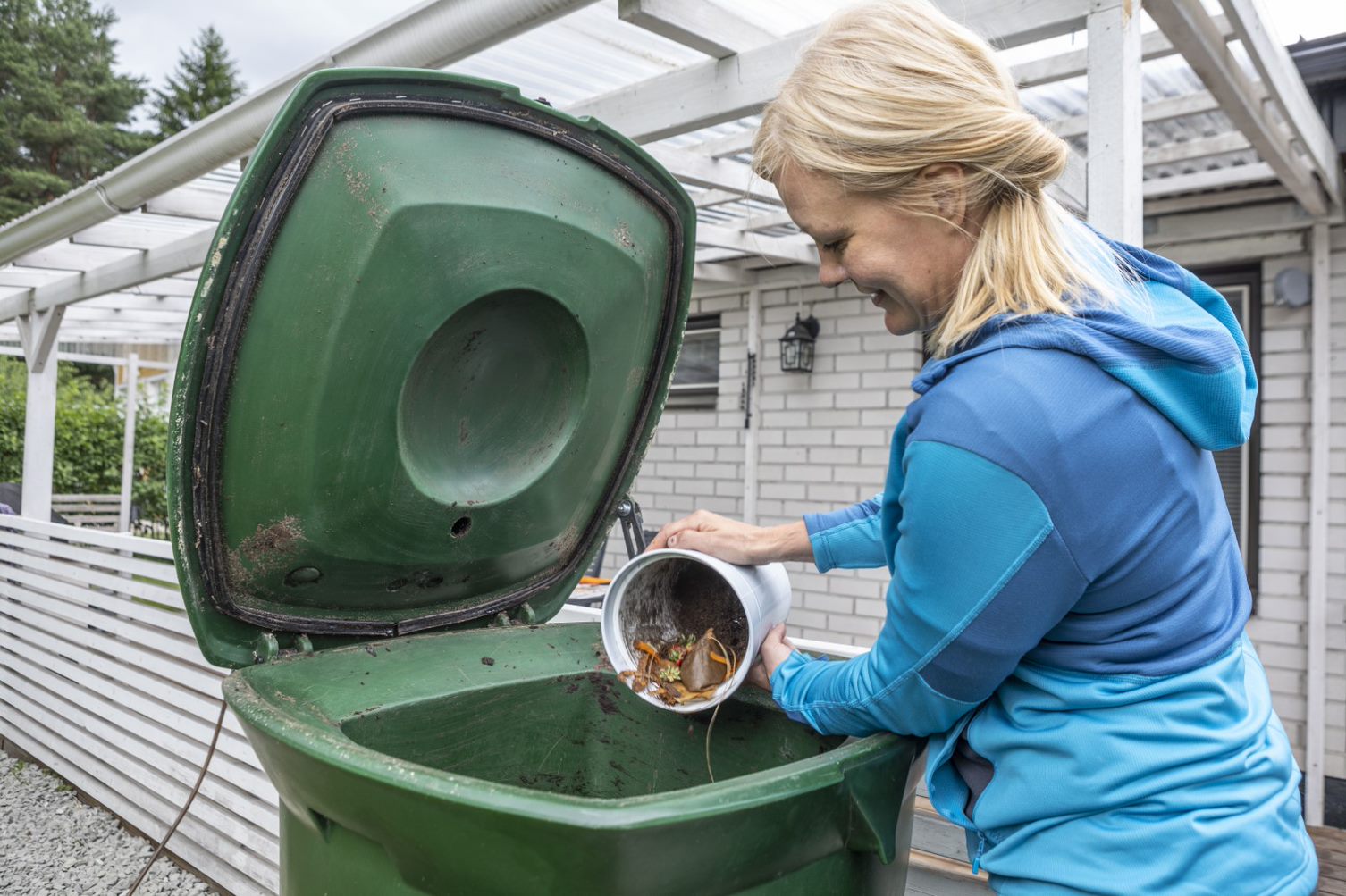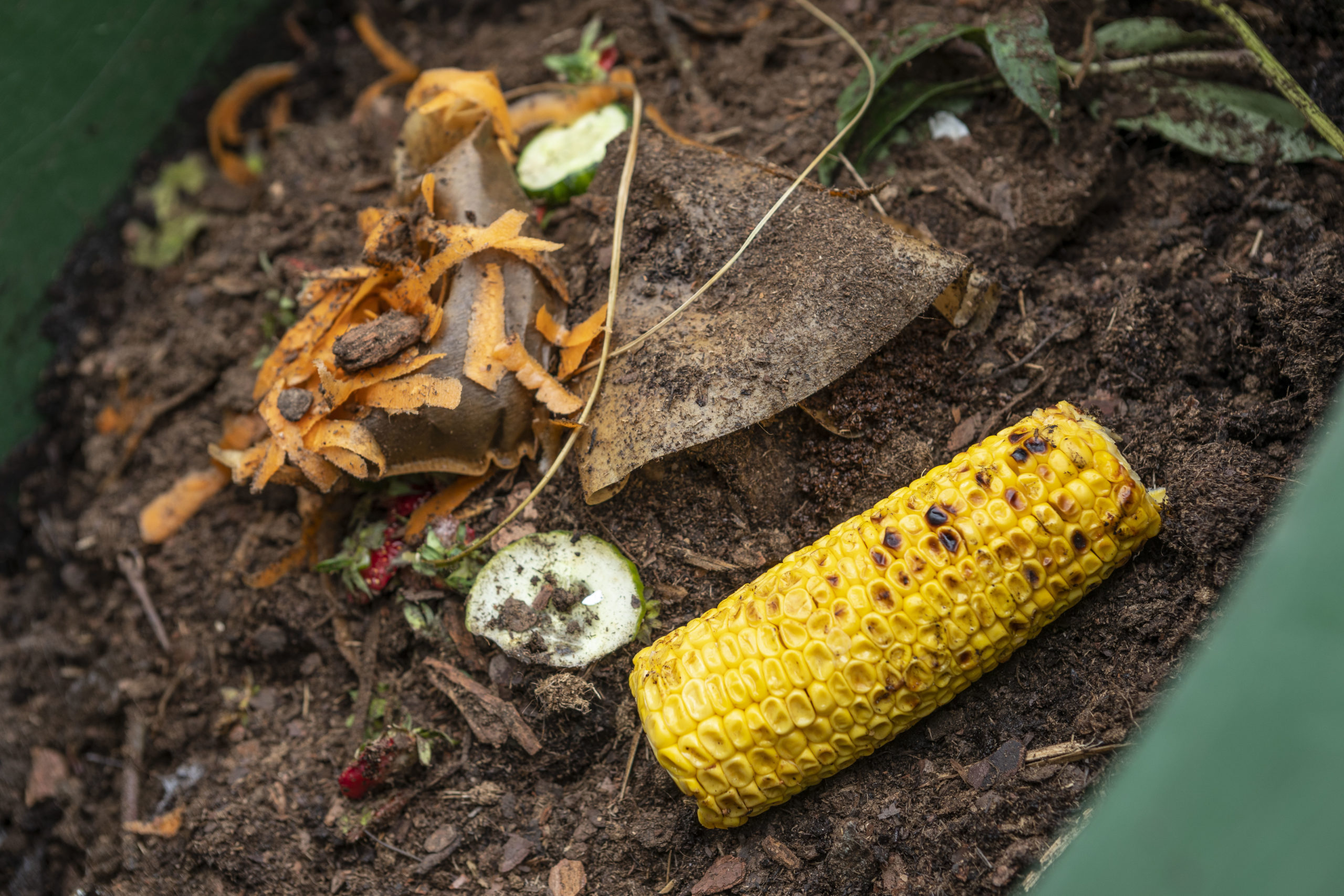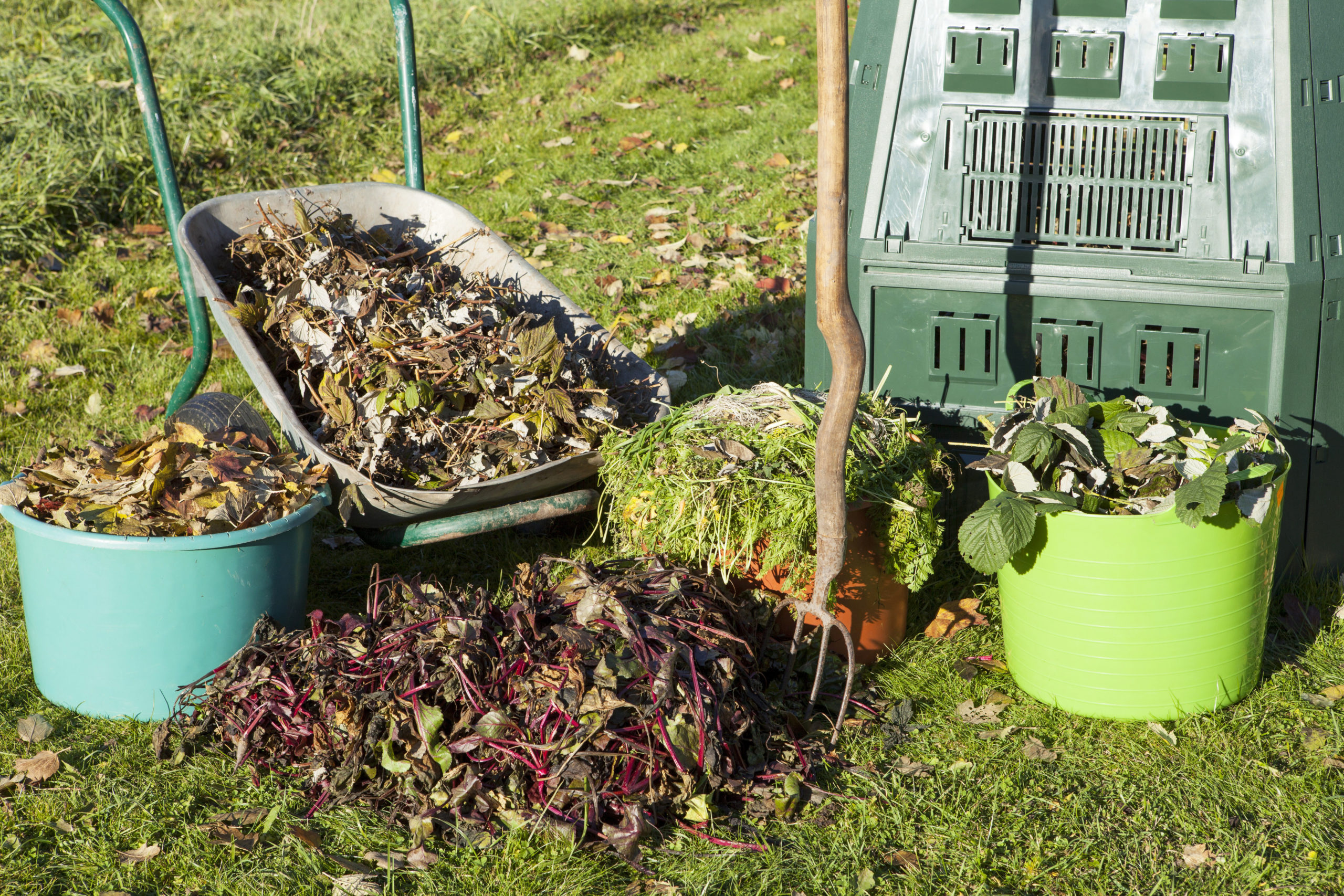Composting

Small actions matter.
Nutrients into circulation through composting
As much as one third of household waste is organic matter. Composting allows the waste to be treated at source, with no need to transport or treat it elsewhere. Household waste that can be composted includes biowaste from the kitchen as well as raking and plant waste from the garden. Composting provides you with good soil for the yard and allows you to put valuable nutrients into circulation. By composting biowaste, you can also extend the emptying interval of the mixed waste container.
Composting is a natural way to return the nutrients bound in organic matter to give strength for the growth of new life. With composting, people help nature by providing good conditions for micro-organisms that decompose waste. Waste is mainly decomposed by bacteria, fungi, actinobacteria and worms, aided by a large number of diverse micro-organisms. Carbon dioxide, water vapour, nutrient salts and humus are generated as a result of the decomposition.
Useful information about composting
- Composters are roughly divided into two groups: insulated thermal composters and non-insulated composters. The insulation layer of thermal composters keeps the heat generated in composting inside the composter and contributes to the waste turning into soil.
- In densely populated areas, a thermally insulated composter that has been protected from pests is required for the composting of kitchen waste.
- Garden waste may be composted in a non-insulated composter or in a well-maintained clamp or frame.
- If kitchen waste is treated using the bokashi process, the emptying interval of the waste container may be extended when the semi-finished fermented bokashi is composted in a composter that has been protected from pests in a densely populated area.
- The composter must be located, constructed and maintained so that its use does not pose a threat to or harm people’s health or the environment.
- The size of the chosen composter depends on the amount of waste generated on the property. A composter that is too small will not be able to compost all the waste generated in time, while a composter that is too large will not keep functioning. The size of the composter should be chosen so that the waste can decompose for six to eight weeks. For a family of four, a composter of 200–300 litres is usually sufficient.
- You can also make a composter yourself. There are a lot of good instructions for building one online. A self-made composter must also meet the requirements of the waste management regulations.
- The composter must be placed at least five metres away from your neighbour’s border.
- The composter can also be shared by several properties or apartments.
- Compost must not be removed from the composter until the waste has decomposed.
- Dry toilet waste, pet droppings and small sewage treatment plant sludge may only be composted in a suitable, closed and well-ventilated composter that has been protected from pests and the runoff water of which has been prevented from entering the ground. The composting period for faecal waste is at least one year.
Composting of kitchen food waste
In densely populated areas, a thermally insulated composter that has been protected from pests is required for the composting of kitchen waste. You can compost:
- vegetable and fruit peels, eggshells
- waste from meat and fish
- spoiled food and leftovers
- coffee grounds with filter papers and tea bags
- soft paper
- old potting soil and ornamental plants.

Make a notification to waste management boards Kolmenkierto
You have to notify waste management boards Kolmenkierto of composting of food waste. If you only compost garden waste, notification isn’t necessary.
Submit a composting notification

Composting of garden waste
In addition to an insulated composter, garden waste can also be composted in a heap or non-insulated composter. Garden waste is often poor in nitrogen, dry or coarse. Nitrogen can be added using, for example, fresh grass clippings, fertilised peat, garden nitrogen fertilisers, urine and composting toilet waste.
The composting process can be sped up by moistening the compost and adding either compost accelerators or partially decomposed compost in between.
Shredding leaves with, for example, a lawn mower speeds up their decomposition process and prevents the leaves from sticking together and forming large sheets. Brushwood should always be shredded before composting. Items suitable for garden waste compost include
- raking and mowing waste, plant waste from the vegetable garden or flower bed;
- hay and straw, cutter chips and sawdust in small quantities; and
- brushwood chips, moss and lichen.
.
Tips for composting
- Regularly add bedding in between and on top of the compost. Mix the compost when adding the bedding. This will even out the maturation process and aerate the compost. The purpose of the bedding is to make the compost airy and to bind moisture and nutrients. In addition, the bedding prevents odours, flies and drying of the surface layers. Good and inexpensive beddings include dry raking waste and tree leaves, wood chips, cutter shavings, mulch, peat, and mixtures of these.
- Well-functioningcompostis warm, the pulp sinks into itself, the characteristic odour is earthy and there are no fly larvae in the compost.
- In food waste compost, the amount of bedding being too low is what often causes problems, including the compost becoming too moist, lack of oxygen and odour issues.
- Kitchen waste compost usually requires about six months to mature after the last time that waste is added.
- Composted kitchen waste should be post-composted in another composter, compost frame, heap or among garden waste.
- Dry perennial weeds (e.g. couch grass) above ground in the sun before putting them in the compost and bury them in the hottest centre part of the compost.
- Do not compost invasive alien species if you are not sure about the plant being destroyed.
- Ash does not belong in compost.
- The most common problem with garden waste compost is slow decomposition, which is most often caused by lack of nitrogen and dryness. Moistening the compost and nutrient additives speed up the composting process and improve the quality of the compost soil.
- Semi-mature garden waste compost serves as cover at the roots of shrubs and trees in a layer of about 5–15 cm. It fertilises, prevents the growth of weeds, keeps the soil moist and attracts beneficial organisms. Mature compost can be used as cover, substrate or for soil conditioning. Work 30 to 50 litres of compost per square metre into the soil depending on the needs of the plants.

